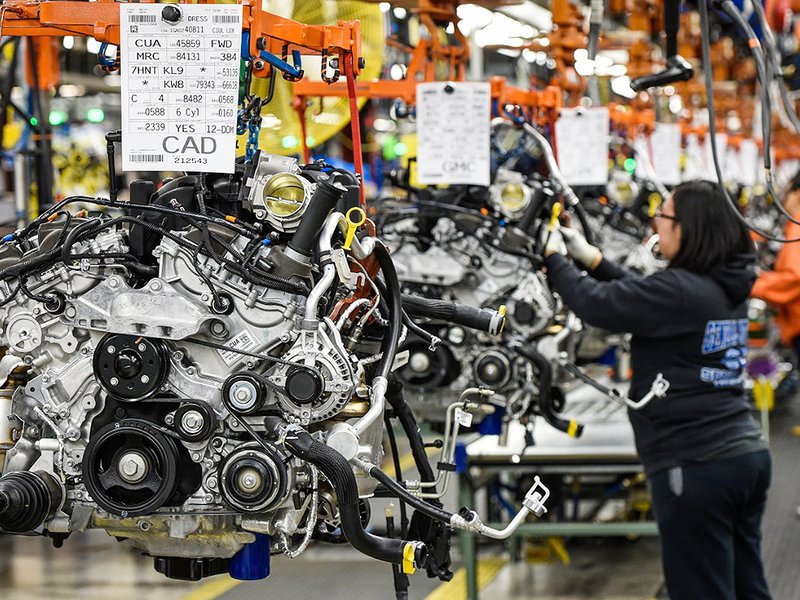
General Motors’ collapse in the Great Recession left its mammoth Spring Hill, Tenn., vehicle and engine manufacturing complex without a car to build and with an uncertain future.
A decade later, the site is again pumping, garnering more investment and spurring supply chain growth in the region. Since 2010, GM has reinvested more than $2.3 billion at Spring Hill. And significantly for the site, the investments have targeted flexibility and future auto technologies to keep the plant well positioned.
“Customers’ demands have shifted and we’ve evolved here,” Ken Knight, GM Spring Hill executive plant manager for the past eight years, told Automotive News.
Knight said new launches, changing technological trends in the industry and talent are all pushing Spring Hill’s mission.
Investments over the past four years have brought key changes.
- In 2016, GM committed $788.7 million for a new high-efficiency engine program, as well as projects to modernize Spring Hill’s vehicle programs. GM invested another $148 million that same year to modernize the flexible machining and assembly equipment for V-8 engines at Spring Hill.
- In February 2017, GM invested $27 million to prepare Spring Hill to assemble a right-hand-drive crossover for export to Australia as the Holden Acadia.
- In January 2019, GM spent another $22 million there for a “global propulsion systems” facility to add capability to an existing line for 6.2L engines using GM’s dynamic fuel-management technology.
- Last month, GM announced $40 million more to increase output at the global propulsion systems facility to build more 5.3L V-8 engines for GM’s full-size truck and SUV programs.
The string of investments in the Tennessee site — GM’s largest facility in North America — have made it an example of the flexibility GM wants across its manufacturing landscape.
Spring Hill has always had a special role among GM plants since opening in 1990 as the wholly-owned Saturn Corp. Today, in addition to making the Holden, Spring Hill assembles the Cadillac XT5 and XT6 and GMC Acadia crossovers, and the 6.2L V-8 engine that powers the Chevrolet Tahoe, GMC Yukon and Yukon XL and Cadillac Escalade.
Even at the peak of the recession, Spring Hill’s stamping operations and its separate powertrain plant were still running. Then, in November 2011, GM invested $61 million to bring the idled assembly plant back to life as a flexible line to support Chevrolet production elsewhere.
Increasing demand for crossovers triggered more investment, as did the need for new engines from the plant.
“The key thing was to have really leading-edge material strategies and to take on a lead function for doing things the new way,” Knight said. “We’ve been successful in doing that.”
Knight said Spring Hill has been a center for advancing vehicle lightweighting, introducing adhesives in new applications, its uses of aluminum and its advances in coating technology.
Though Knight said the process of adapting to new launches and manufacturing changes has been second nature to Spring Hill, staffing has seen a tumultuous ride — hitting a low of 1,650 personnel in 2010 between its engines and stamping and injection molding operations. The site now employs about 3,300 hourly workers and 400 salaried employees, with some third-party employees to service the plant’s growing demands.
Spring Hill works with more than 200 suppliers in Tennessee alone. The halt in GM vehicle production there a decade ago also brought down production at local suppliers. The return of full activity has reignited the supply chain over the past few years.
“We have the confidence that we’ll be able to adapt and make the changes necessary as the pace and the customer evolve,” Knight said. “But the things that are probably most notable to the outside world will be the product change. Electrification is coming.”